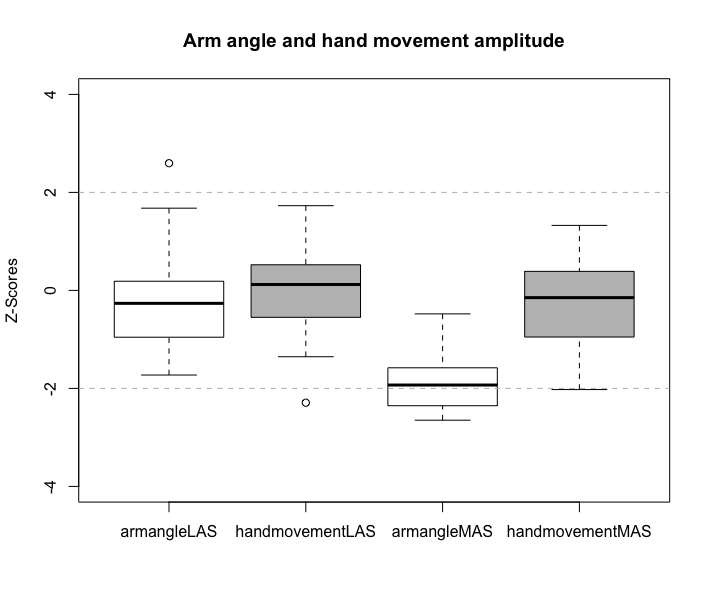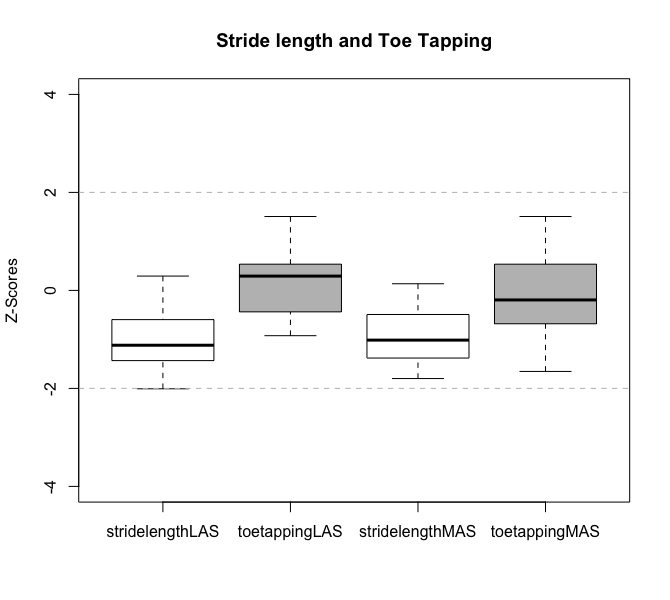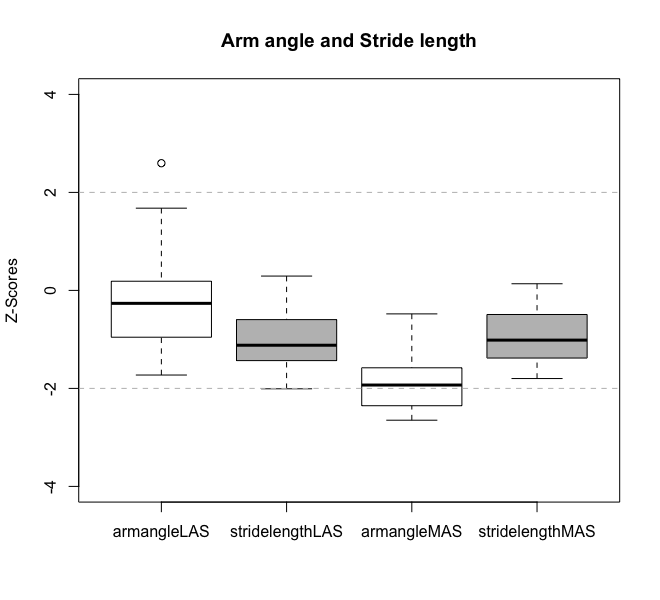Category: Technology
Objective: To determine if proximal body parts are more affected than distal body parts at the clinical onset of Parkinson’s disease (PD).
Background: Motor features in PD typically begin focally, with frank asymmetry between the limbs. The More Affected Side(MAS) is symptomatic whereas the Less Affected Side(LAS) may be seen as representing an earlier disease stage.
Advanced technologies offer precise quantification of motor function.
Method: We recruited 37 PD patients under 65 years of age, within the first year of diagnosis, presenting with focal motor signs. Using the Mobility Lab software (n=21) and the Kinesia ONE equipment (n=37), we assessed arm swing and stride length as a proxy of upper and lower limb proximal motor function, respectively, and hand movement and toe tapping amplitude as a proxy of distal motor function. All measures were converted to Z-scores using healthy control and normative data.
We compared the Z-scores of proximal and distal segments within upper and lower limbs, and proximal segments of upper and lower limbs using the Wilcoxon test. Results are shown as mean ± standard deviation.
Results: Upper limb
On the MAS, the Z-score was significantly reduced proximally when compared to distal involvement (-1.81±0.69 vs -0.17±0.84, p-value< 0.001). But, for the LAS, the proximal and distal Z-scores did not show significant difference (-0.23±1.09 proximal upper limb and 0.15±0.91 for distal upper limb, p-value=0.08).
Lower limb
On both sides the proximal Z-score was significantly lower than the distal assessment (MAS:-0.96±0.65 vs -0.19±1.14 respectively, p-value<0.001; LAS:-0.98±0.66 vs 0.004±1.19 respectively, p-value<0.001).
MAS vs LAS
In the comparison of one side vs the other, we found a significant difference only in the proximal upper limb, with greater Z-score reduction on the MAS compared to LAS(p-value<0.001).
Proximal upper vs proximal lower limb
A significant difference (p=0.01) was observed in the LAS, indicating a greater deviation in the proximal lower limb compared to the proximal upper limb. Conversely, in the MAS, there was a greater affection of the upper limb compared to the lower limb (p-value<0.001).
Conclusion: Motor signs in PD appear to manifest initially in proximal limbs rather than distal. While the proximal lower limb may exhibit more significant impairment in earlier stages (i.e., evaluating the less affected side), the onset of clinically symptomatic manifestation emerges first in the proximal upper limb.
Proximal vs distal upper limb
Proximal vs distal lower limb
Proximal upper limb vs proximal lower limb
To cite this abstract in AMA style:
MA. Ruiz Yanzi, M. Matarazzo, T. Jiménez-Castellanos, JA. Pineda-Pardo, MHG. Monje, A. Sánchez-Ferro, C. Gasca-Salas, R. Martínez-Fernández, JA. Obeso. Motor Onset of Parkinson’s disease: the proximal limbs are first [abstract]. Mov Disord. 2024; 39 (suppl 1). https://www.mdsabstracts.org/abstract/motor-onset-of-parkinsons-disease-the-proximal-limbs-are-first/. Accessed March 30, 2025.« Back to 2024 International Congress
MDS Abstracts - https://www.mdsabstracts.org/abstract/motor-onset-of-parkinsons-disease-the-proximal-limbs-are-first/



